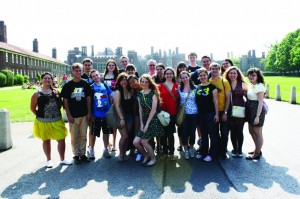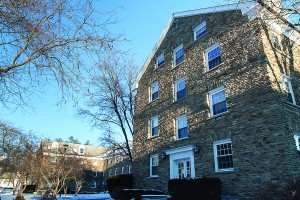With recent low enrollment numbers in Houghton’s three first year honors programs – East Meets West, Science Honors, and Contemporary Contexts – the college has decided to cut Contemporary Contexts for next year to focus on recruitment and effectiveness on the two remaining programs.
Science Honors focuses on researching and analyzing scientific data, while students build a model on what they are researching. The other two programs, Contemporary Contexts and East Meets West are integrative; they combine courses on philosophy, art, literature, political science, or history, and involve experiential learning overseas during Mayterm.
 Originally, Houghton College started its first honors program in the mid-1990’s. This was the First Year Honors Program (FYHP), which was a semester abroad in London. The program became very popular amongst prospective students. Professor Ben Lipscomb, director of honors, said, “We found that we were interviewing and turning away people.” So as demand and interest grew for the honors program, East Meets West was created, said Eric Currie, vice president for enrollment management. This not only allowed options for the incoming freshmen, but also allowed the college to enroll more students into the honors programs.
Originally, Houghton College started its first honors program in the mid-1990’s. This was the First Year Honors Program (FYHP), which was a semester abroad in London. The program became very popular amongst prospective students. Professor Ben Lipscomb, director of honors, said, “We found that we were interviewing and turning away people.” So as demand and interest grew for the honors program, East Meets West was created, said Eric Currie, vice president for enrollment management. This not only allowed options for the incoming freshmen, but also allowed the college to enroll more students into the honors programs.
Another program, Science Honors, was then added a few years later “to recruit students for a particular set of majors,” said Lipscomb. So in response to the higher rate of college enrollment, the number of honors programs increased from one to three programs.
Honors programs themselves “exist for two overriding purposes,” said Lipscomb. “One is to recruit ambitious, high-performing students to the college,” and the other is “to produce great sophomores.”
Previous students who were accepted into honors echo Lipcombs’ remark. “I would not have come to Houghton if I hadn’t gotten accepted into the honors program,” said Collin Belt, a junior who was in Contemporary Contexts. Essie Fenstermacher, a previous student of East Meets West of last year, said, “Applying for the honors program made me focus more on Houghton. Having to put in that extra effort made it more of an investment.”
Lipscomb commented that in recent years, however, “recruitment numbers have been lower and that reflects itself in the honors selections process.” With student enrollment in the college decreasing and with honors programs being expensive to run, “let’s fill two programs more adequately instead of having three programs slightly under-enrolled.”
Dean of the College, Linda Mills-Woolsey, added, “If we can get the two programs fully enrolled or almost fully enrolled, we can have the same number of honor students as this year.” This year’s total enrollment of 48 students in the honors programs is significantly lower than the projected 73 students.
In hopes to increase the recruiting process for the honors programs, Contemporary Contexts, which evolved out of the FYHP, will be cut for next year. When talking about choosing which program to cut, Mills-Woolsey emphasized that “the things that has handicapped Contemporary Contexts is having it change every year. That has made it harder to market.” Dr. Lipscomb added, “What Contemporary Contexts struggled to do was to be a recruiting tool for the college.” And because of “its western travel destinations, it was consistently more expensive to run.”
Lipscomb continued to add that Science Honors has “bumped up the number of physics majors over the last four or five years, and we are interested in seeing how it will do with less competition.”
Mills-Woolsey stated that “whatever the future holds for honors, it needs to hold that sense of stretching and that sense of adventure.”
 The decision to close three floors was made “in response to a low enrollment figure for the current year,” said Marc Smithers, Director of Residence Life and Housing, and the closures are not an indicator of lower enrollment for the upcoming year.
The decision to close three floors was made “in response to a low enrollment figure for the current year,” said Marc Smithers, Director of Residence Life and Housing, and the closures are not an indicator of lower enrollment for the upcoming year.
